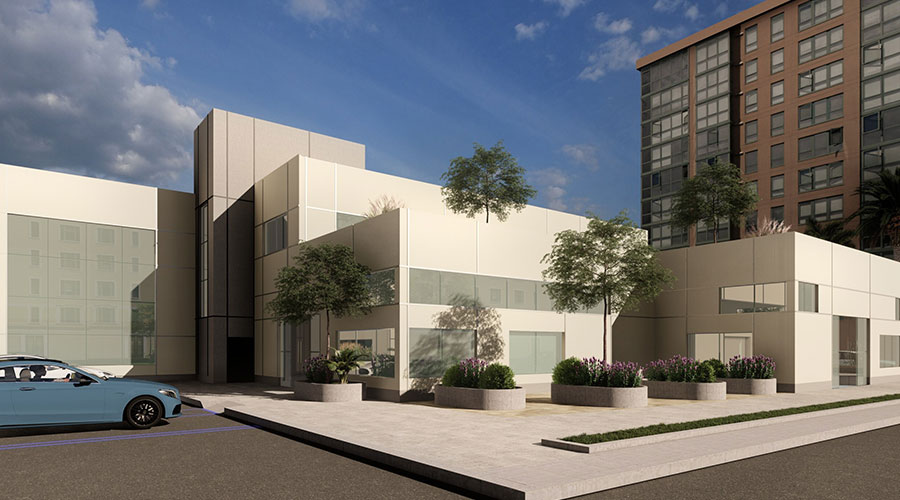Challenge: To provide maximum comfort and energy savings in the patient care addition of a critical access hospital
Founded in 1915, Meridian, Mississippi-based Rush Health Systems (Rush) is a comprehensive health care network serving East Central Mississippi and West Central Alabama. Rush opened Choctaw General Hospital in 2012. The 74,000-square-foot critical access hospital is the only one in Choctaw County, Alabama.
Fred Rogers, Rush Health Systems’ vice president, chief resource officer and facility manager decided to renovate an existing building for the administration portion of his new hospital and enlisted architects to create plans for a new 44,000-square-foot addition to house the patient care section.
For the new patient care addition, Rogers selected the Variable Refrigerant Flow (VRF) zoning system from Mitsubishi Electric US Cooling & Heating Division.
“Fortunately, I installed my first VRF [zoning] system years ago in our flagship Rush Health Systems hospital in downtown Meridian. That system saved me $36,000 the first year. I now specify this excellent VRF zoning system for all new critical access hospitals we build: Choctaw is our fifth.
This technology is the finest for the very specific needs of the healthcare industry,” Rogers said.
Stan Williamson, a senior project manager with McLain Plumbing & Electrical Services, Inc., Philadelphia, Mississippi, installed the VRF zoning system.
Williamson especially likes the system's individual zoning capability. “In health care facilities, a patient in one room is going to want it cold while his neighbor next door wants it hot. The simultaneous cooling and heating capacity is the best in the industry.
"Conventional systems cannot do this,” he said.
Choctaw Hospital Administrator J.W. Cowan says patient care is his number one priority, and he gives his VRF zoning systems credit for providing the comfortable environment that his patients greatly appreciate.
“But I have never had one patient complaint because this system is such a good fit with hospitals. The indoor units are so quiet the patient is not aware they are operating. And the individual room controls are so precise my patients are always comfortable,” said Cowan. “I was with a patient today whom I have to move to Alabama’s largest [800 bed] hospital. She remarked, ‘I don’t want to go because they always keep it cold and I know I will be uncomfortable. Here, my room is always at the right temperature.’”
The VRF zoning system also resulted in lower energy costs for Choctaw. “When I look at my monthly energy bills, I am shocked at how affordable my costs are — especially during the peak summer and winter months,” Cowan continued. “I attribute this largely to the system's energy-saving aspects.”

 UF Health Hospitals Rely on Green Globes to Realize Their Full Potential
UF Health Hospitals Rely on Green Globes to Realize Their Full Potential How Healthcare Facilities Can Be Truly Disaster-Resilient
How Healthcare Facilities Can Be Truly Disaster-Resilient TriasMD Breaks Ground on DISC Surgery Center for San Fernando Valley
TriasMD Breaks Ground on DISC Surgery Center for San Fernando Valley Bigfork Valley Hospital Falls Victim to Data Breach
Bigfork Valley Hospital Falls Victim to Data Breach AI-Driven Facilities: Strategic Planning and Cost Management
AI-Driven Facilities: Strategic Planning and Cost Management